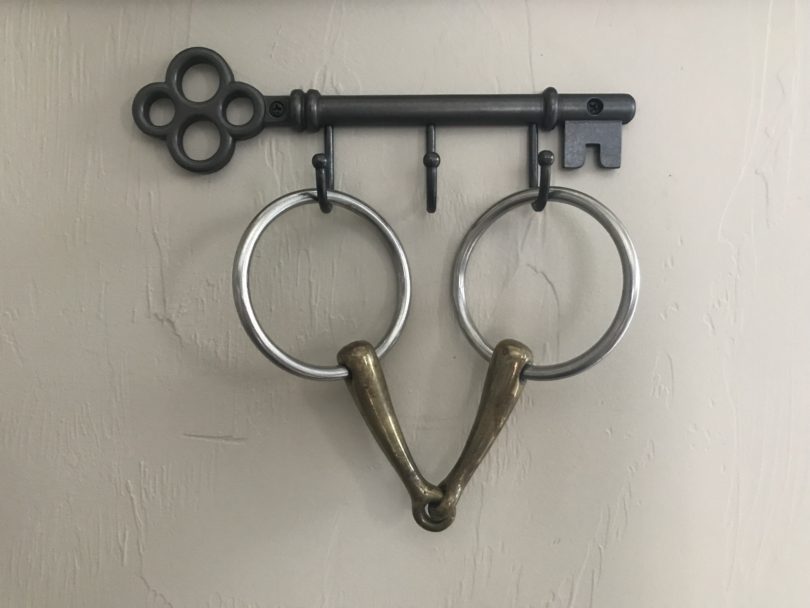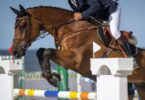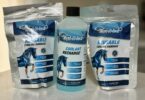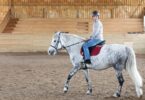The Best Snaffle Bit for Horses? Mystery Solved.
All snaffle bits aren’t made equal. If you’re anything like I was, though, all snaffles probably seem like “nice and safe” options. Side by side, they also look pretty darn similar. How different could they be? Why spend more when you can buy basically the same thing for way less? Well, this Horse Rookie has two words for you: lesson learned.
The Herm Sprenger Turnado is a loose ring snaffle that keeps everything riders love about basic snaffles, but takes the classic single-joint bit to a whole new level of softness and straightness. Within five minutes of switching to this bit, my horse was traveling better than he had in years.
This review walks you through a comparison of this Herm Sprenger bit and a “typical” snaffle. You’ll learn why I began searching for an alternative, how I tested multiple bits, and why the Turnado rose above the rest.
The Best of Intentions
Before I bought my finished reined cow horse, he was solely ridden western in a lovely Tom Balding shank bit. That was all well and good for our reining and cow work, but I obviously couldn’t use that bit for his new
I assumed finding a suitable english bit would be easy, and I spent less than ten minutes picking one out at the tack store.

Korsteel Regular Dee (My Original Snaffle)
After all, my horse is beautifully trained, doesn’t pull, doesn’t rush, and moves well off my leg, seat, and rein aids. Glancing around the selection of snaffle bits, I picked a basic Korsteel Regular Dee (shown above).
It’s a popular (and inexpensive) single joint snaffle bit without bells, whistles, or corrective features my horse didn’t need.
In fact, I thought it was such a safe bet that I bought two of them–one for his
OK, But Not Great
For the next two and a half years, I began transforming my western cow horse into an all-around athlete who also did
Though it all, I struggled with crookedness, getting him as soft in the english bridle as he was in his western tack, and encouraging him to work round and over his back in his snaffle.

We struggled with crookedness and relaxation
Every english lesson started off “choppy” with his back legs pushing more out and behind than drawing up and under his core.
After a while, it would improve. But, he never traveled as well as he did in our western lessons. More importantly, he never seemed as relaxed and happy in a snaffle.
I was perplexed.
Seeing the Light
Recently, a group of adult amateur riders at my barn started meeting monthly to learn about various riding and horse care topics.
Our instructor leads the casual seminars, and I always get a ton of great information from them.
That was especially true when our focus area was “Bits & Bridles.”
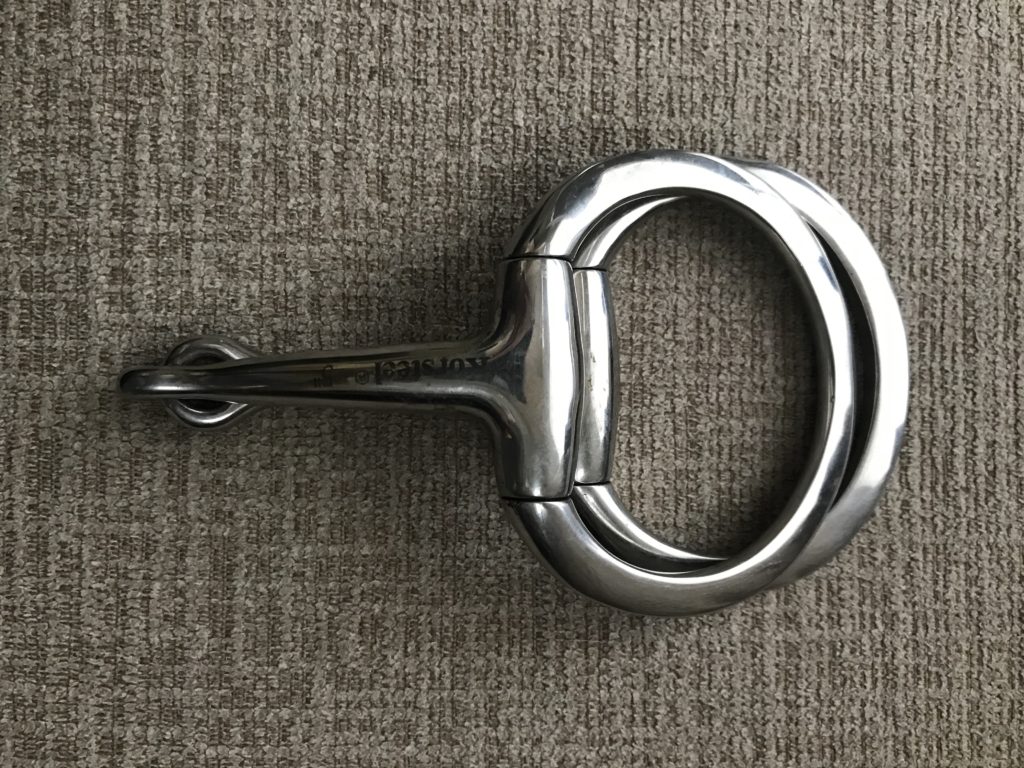
No wonder my horse was crooked…
Not only did I learn my current english bridle was a solid choice and didn’t need to be changed (Yay!), I found out the snaffle bit I’d thought was the best (and most basic) choice fell short on several key fronts:
- Asymmetry: At a glance, the sides of my original bit seemed the same. When jointed in half, however, I could instantly see they were not. One side was notably shorter. (Hello, crookedness!)
- Activated Angle: On a loose rein, all was well. But, when my reins were in use and I ask my horse to come forward to and accept my contact, the angle of the bit and joint changes. In my case, the metal joint moved up and into the roof of my horse’s mouth more acutely. (Hello, resistance to contact!)
Bottom line: My bit wasn’t “hurting” my horse, but it sure wasn’t helping him either.
Searching for Alternatives
I spent my next english lesson trying alternative bits to see which one my horse preferred. (When he’s happy, I’m happy. So whichever one he went best in was going to be fine with me!)
We tested:
- Herm Sprenger Ultra (Straight & Rotated Bean Versions): He was more relaxed than normal and more willing to accept contact, and his straightness was somewhat improved. The rotated bean version was our leader until we tried the Turnado.
- Waterford: Though they look crazy (IMHO), Waterford bits aren’t harsh. They’re simply made to discourage horses that get heavy in the front from leaning on your hands. My horse can get heavy, so I wanted to try this. But, my horse didn’t really know what to do with it and backed way off my contact. So, that was out.
- Herm Sprenger Turnado: This was the last bit we tried, and I could tell within five minutes that it was the winner.
Here’s a video of my horse in the Turnado. He’s moving forward, round, accepting my contact…and look at that happy and relaxed swinging tail!
A Clear Winner
I had to laugh when my horse picked a bit so outwardly similar to the one we’d been using for years–yet moved so much better with a few seemingly small modifications.
Gone were the choppy strides at the start of our lessons. Gone were the jigs where smooth transitions should go. Gone was the crookedness he’s always had to the left. It was like magic.
Since the two bits look similar upon first glance, I’ve included a couple close-ups to illustrate the differences.
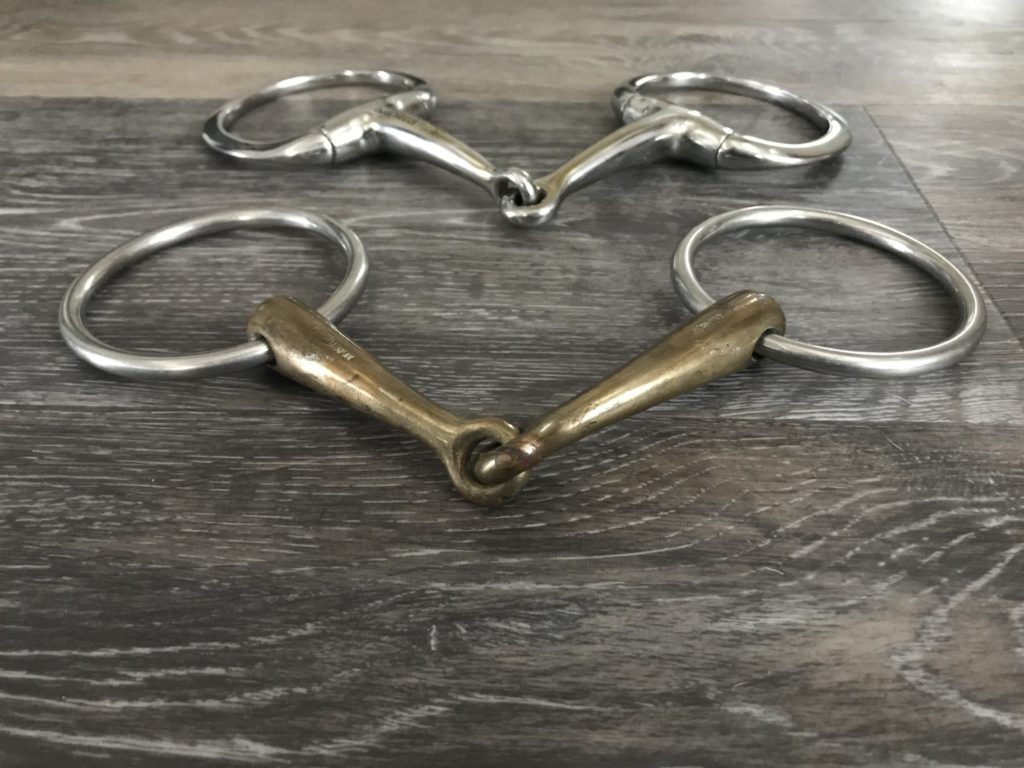
Old bit (top) and new bit (bottom): Note the 45-degree bit rotation on the Turnado that allows it to lie softly in the mouth.
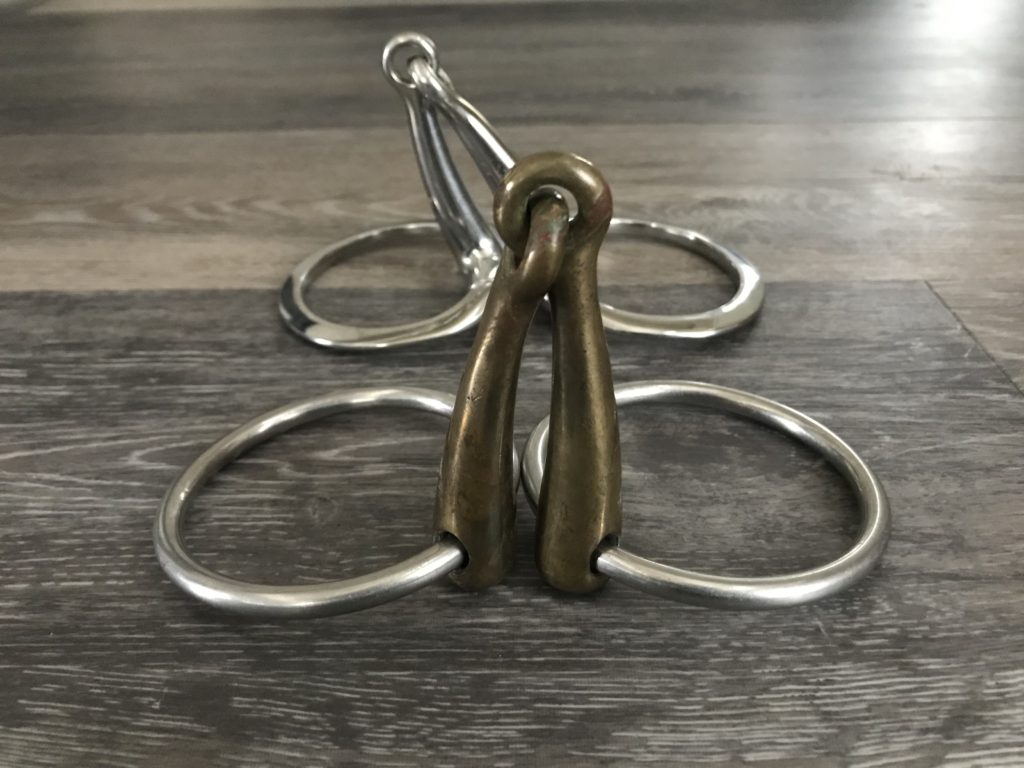
Comparing symmetry between my old bit (top) and new bit (bottom); Wonder where all that crookedness used to come from…
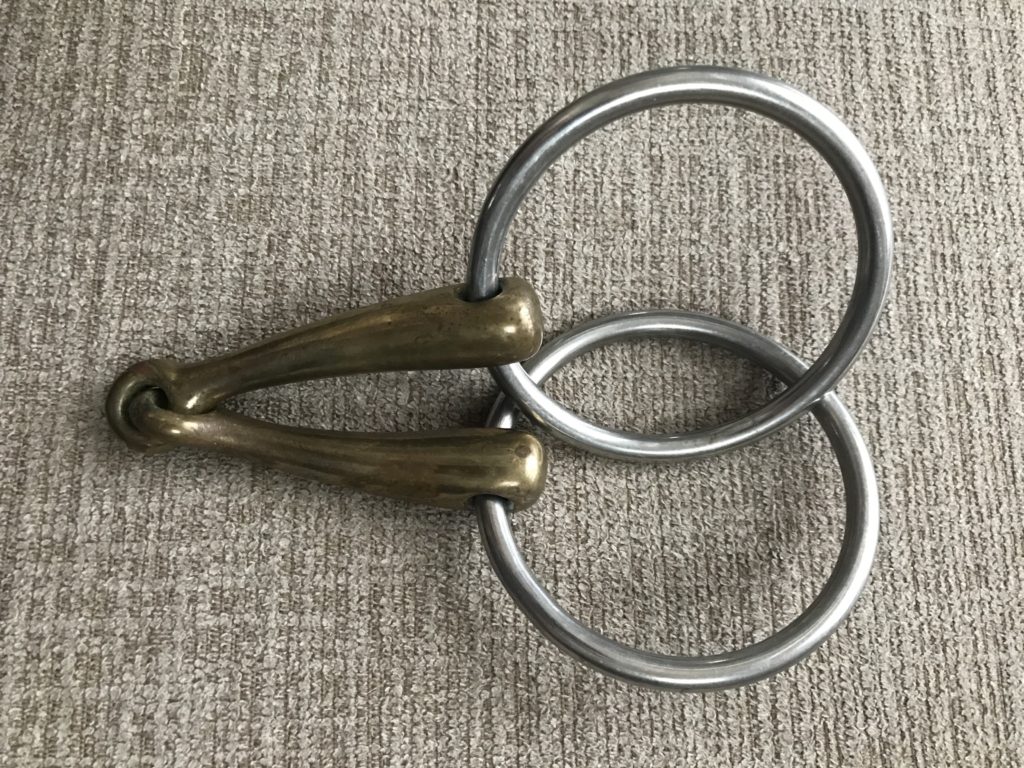
My new Herm Sprenger Turnado: Perfectly symmetrical when jointed and rotated to ensure softness in the mouth
Improving Bit by Bit
Part of me feels guilty for not realizing the bit I used for years could have be better. Then again, I made the best decision I could with the information I had at the time. #rookierealities
Now, though, I’m delighted to have found a bit that’s still “simple and safe,” as I originally intended.
But, it’s also innovative enough to help my horse move at his best, enjoy his job even more, and keep take us to the next level… bit by bit!
P.S. Enjoy this article? Trot on over to:
- 16 Common Types of Horse Bits (A Helpful Illustrated Guide)
- Plain English Please: Types of English Horse Bits
- 5 Best Bits for Your Arabian Horses (English & Western)
- Racing Days Are Over: 5 Best Bits for OTTBs
- Herm Sprenger Turnado Bit Review: I’ve Never Ridden Better
- (Bit)Less is More: Bitless Horseback Riding for Beginners
- Best Bits for Quarter Horses (A Helpful Illustrated Guide)

